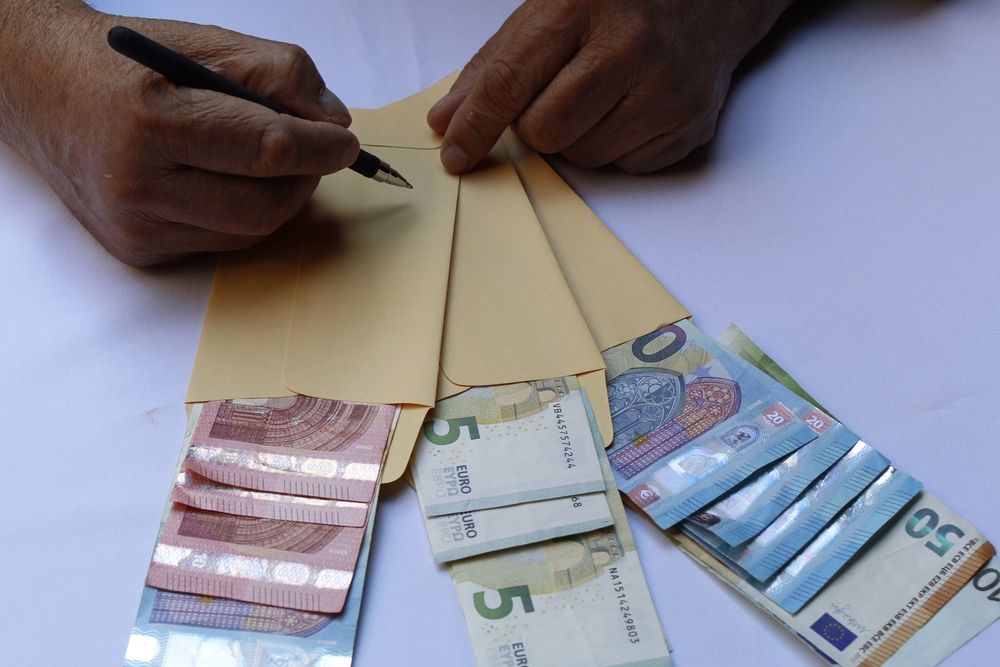Managing your finances doesn’t have to be complicated. If you’ve struggled with overspending or staying on top of your budget, the envelope system might be the straightforward solution you need. This time-tested method encourages mindful spending by helping you visualize and limit your expenses — all without the need for complex software or spreadsheets.
Whether you’re new to budgeting or looking for a more tactile, discipline-focused approach, the envelope system offers a hands-on way to manage your money effectively. Here’s how to use it to simplify your financial life and gain control over your spending habits.
What Is the Envelope System?
The envelope system is a cash-based budgeting method that involves dividing your monthly income into categorized envelopes. Each envelope represents a specific expense — such as groceries, gas, or entertainment — and once the cash in that envelope runs out, you’re done spending in that category for the month.
Core Principle:
-
You assign a set amount of money to each category.
-
You physically place the budgeted cash into labeled envelopes.
-
You only spend from each envelope for its designated purpose.
It’s simple, visual, and extremely effective for anyone who tends to overspend or wants a better grasp on where their money goes.
Step 1: Determine Your Monthly Income
Before you can assign money to envelopes, you need to know exactly how much you’re working with. This includes:
-
Your regular paycheck (after taxes)
-
Side gig earnings
-
Any predictable monthly income like child support or freelance payments
If your income varies, take a three-month average to use as a starting point.
Step 2: List and Categorize Your Expenses
Make a detailed list of all your monthly expenses. Divide them into two types:
Fixed Expenses (not managed through envelopes):
-
Rent or mortgage
-
Utilities
-
Loan payments
-
Insurance premiums
These are typically paid online or by check and don’t require envelope tracking.
Variable Expenses (ideal for envelopes):
-
Groceries
-
Gas
-
Eating out
-
Clothing
-
Household items
-
Entertainment
-
Haircuts or personal care
-
Miscellaneous or fun money
These are the categories where overspending tends to occur — making them perfect for the envelope system.
Step 3: Assign Budget Amounts to Each Envelope
Now that your categories are set, assign a specific dollar amount to each based on your past spending and financial goals.
Tips for Setting Envelope Amounts:
-
Use your last 1–3 months of bank statements for reference.
-
Be realistic — not too tight, but not overly generous.
-
Prioritize needs before wants.
For example:
-
Groceries: $400
-
Gas: $150
-
Dining out: $100
-
Entertainment: $50
-
Clothing: $75
This is your spending plan for the month. Once you’ve decided on your totals, the real work begins.
Step 4: Fill Your Envelopes With Cash
On payday or the beginning of your budgeting period, withdraw your budgeted cash and divide it into physical envelopes.
Envelope Setup:
-
Label each envelope with the category and budgeted amount.
-
Use sturdy, sealable envelopes or a pre-made cash wallet system.
-
Keep your envelopes in a safe place at home, or carry only the ones you need that day.
Some people prefer to split envelopes into weekly distributions if monthly budgeting feels too long between refreshes.
Step 5: Spend Only What’s in Each Envelope
Here’s the most important rule: Once the money in an envelope is gone, it’s gone — no borrowing from other envelopes, and no dipping into savings.
Why This Works:
-
It builds discipline and awareness around spending.
-
It forces you to plan ahead and think before purchasing.
-
It helps prevent impulse buying.
If you run out of money in your “eating out” envelope mid-month, you’ll either need to cook at home or wait until the next month to eat out again.
Step 6: Track and Reflect as You Go
While the physical cash keeps you honest, tracking your spending within each envelope gives you insight into your habits.
Tracking Options:
-
Write each transaction on the envelope.
-
Use a small notebook or phone notes.
-
Keep receipts in the envelope for a quick reference.
At the end of the month, review where you did well — and where adjustments may be needed. You might discover you under-budgeted for groceries or can safely lower your gas spending.
Step 7: Adjust Your Budget Each Month
Your budget won’t be perfect the first time — and that’s okay. As you get used to the envelope system, you’ll refine your categories and amounts.
How to Adjust:
-
Shift money between categories based on actual usage.
-
Consider adding a buffer envelope for unexpected costs.
-
Create seasonal categories (e.g., holidays, school supplies) as needed.
Treat your envelope system like a living plan — it should adapt with your life, not restrict it.
Digital Alternatives to Physical Envelopes
If cash-only isn’t practical for you, several apps simulate the envelope method digitally while offering more convenience and security.
Top Apps:
-
Goodbudget – Manual entry with virtual envelopes.
-
Mvelopes – Digital envelope budgeting with account syncing.
-
YNAB – Uses the “give every dollar a job” approach and works well for envelope-style planning.
These tools let you enjoy envelope-style budgeting while keeping most of your money in digital accounts.
Tips for Success With the Envelope System
Like any budgeting method, success depends on consistency and commitment. Here are some helpful tips to make it work:
Start Small
Begin with 3–5 categories, then expand as you become more comfortable.
Involve Your Partner or Family
Discuss your envelope system with your spouse or roommates so everyone stays accountable.
Don’t Carry All Envelopes
Only take what you’ll need for the day — this protects your cash and helps resist temptation.
Use Change Wisely
Save coins in a jar or use them for small purchases — every bit counts.
Be Honest
If you overspend, take note — then adjust and try again. There’s no shame in learning as you go.
Pros and Cons of the Envelope System
Pros:
-
Simple and visual
-
Reduces impulse spending
-
Encourages discipline
-
Doesn’t require technology
-
Ideal for hands-on learners
Cons:
-
Inconvenient for online purchases or recurring digital payments
-
Risk of losing physical cash
-
May not be practical in all areas or lifestyles
Despite its limitations, many people find the envelope system to be one of the most effective ways to build lasting financial habits.



